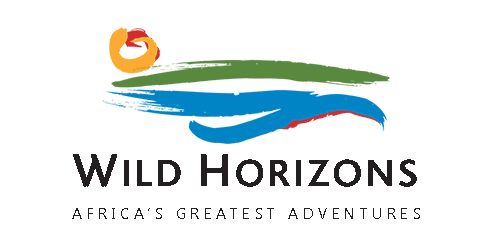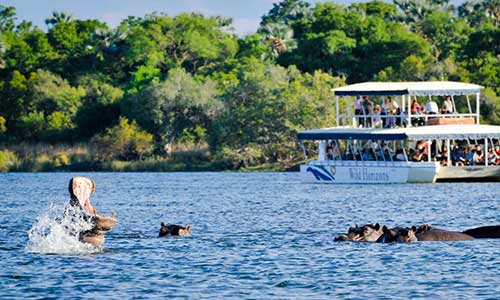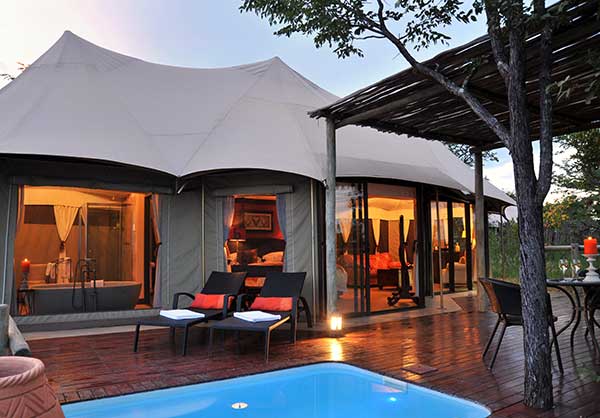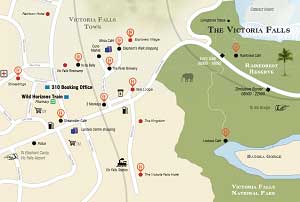Aug 7, 2014 | rafting, Things to do in Victoria Falls, Victoria Falls, Victoria Falls Activity, white water rafting, Wild Horizons Activites, Zambezi river

The Zambezi River, which borders Zimbabwe and Zambia, is widely acclaimed as offering the world’s best white-water rafting run in the world. With a large number of its turbulent rapids which occur in the Batoka Gorge (below the Victoria Falls) achieving a high ‘Grade-5’ status or higher, adventure enthusiasts revere its reputation across the globe. Even the rapid names are enough to get the adrenalin pumping – from “Stairway to Heaven”(Rapid no.5), to “The Gnashing Jaws Of Death” (Rapid no.10), and “The Overland Truck Eater” (Rapid no.11).
A ‘Grade-5’, or ‘Class 5’ rapid, as outlined by the International Scale of River Difficulty, is the grade given to the most dangerous and difficult rapids that are commercially passable by raft or kayak. ‘Grade 6’ rapids are not commercially passable, and only the most experienced of rafters/kayakers attempt this scale of rapid at extremely high risk. An example of a ‘Grade 6’ rapid on the Zambezi is the infamous Rapid no.9 – “Commercial Suicide”.
Whilst the Wild Horizons one-day rafting trip is by far the most popular with tourists and adventurers who usually have limited time in Victoria Falls town – there is one relatively unknown, yet a breathtakingly beautiful product that is also on offer from Wild Horizons for the more adventurous thrill seeker and explorer: Multi-day Rafting. Over the last thirty years, adventurers the world over have been seeking the challenge and serenity that this famous five-day long Zambezi white water rafting quest provides. These days, adventure-seekers may choose between a two-night, two-day trip, or for the more enduring, a four-night, five-day trip.
Multi-day rafting guests start off with the standard one-day trip, which either starts at rapid no. 11 (during high water) or rapid no. 1 during the low water season. It should be noted that multi-day rafting trips only operate during low water rafting (usually around mid-September to mid-December). Low water rafting starts at “The Boiling Pot”, right below the magnificent Victoria Falls. The view of the Falls from down here, just beneath it, is truly unforgettable. You’ll know you won’t forget it when you feel the immense changes in air pressure, and water vapour erratically bursting through the canyons; obscuring your view of the 3,000 tons of water that fall out of the Zambezi River into the boiling pot every second. The thundering roar is deafening, and it reverberates loudly in the chest cavity! It is truly one of the most humbling, magnificent and powerful spots on Earth.
The gorge is over 100 meters deep at the Falls and slowly increases to over 200 meters by the end of a full day rafting trip. The glistening basalt rock walls form a series of sharp hairpin bends, which meander some 120km down the course of the Zambezi River, thus bestowing a beautiful gift from Mother Nature – the course for the world’s best white water rafting!
Rapids are interceded by calm stretches of crystal clear water, where you can take a break from the adrenaline, relax and marvel at the spectacular gorges – thick with vegetation. At the end of the first day of the 120km journey, multi-day rafters bid farewell to the single-day companions that they have made on the river, and set up camp for the night on the white sandy beach below rapid number 21.

Late afternoon at the beach-camp sees some casual beach volleyball, cold beers, and the opportunity to throw out a line and catch some bonus bar snacks before dinner. A significant drop in temperature is felt as the shadows of the gorge encroach rapidly up the river and onto the beach as the sun sinks behind the lips of the basalt cliffs high above. After nightfall, a beach bonfire provides warmth and visual entertainment (affectionately known as “Bush TV”) to guests as they settle into their first night of camping in the belly of the beautiful Batoka Gorge. A dinner table is set under the luminous corridor of stars above, and after a hearty stew or braai, guests are sure to get a good night’s sleep in the tents and sleeping bags provided; snoring to the watery lullaby of the rapids!

On day-two, the beautiful cycle of adventure, adrenalin, endurance, and river exploration repeats itself once again. The first big rapid of the day – “Morning Shave” (no.23), is the perfect wake-up call! On center-left of the rapid, there is an easy wave train to wet you down. “Closed Season” (rapid no. 25) is the last of the numbered rapids, the rest are now referred to by name only. “Closed Season” is closely followed by “Open Season” – one of the biggest rapids on the Zambezi, and pure Grade Five fun! There is a large hole on the river-left and some rocks towards the middle of the run.
From here on in, the gradient of the river starts to level out, and rapids become further interspersed. This is not to say, though, that they get any tamer – as “Ghostrider” – the biggest and best rapid on the Zambezi River, is still to come on Day 3! Towards the end of day 2, guests will raft through the Narrows 1, 2, 3 & 4 – the fourth comprising of a technical rock garden, featuring “Beer Eddy”, whereby as the name suggests, if your guide goes into the eddy, the first round of post-trip drinks will be on him/her!
After a second night of camping under the stars below the Moemba Falls, the start of day three brings the infamous “Ghostrider”. Known only by the exclusive few that have ventured this far; this is Class Five, big water at its best! Three enormous waves, with drops that make rafts disappear; only to re-appear on top of the next wave – this is the biggest, and best commercially runnable rapid that the Mighty Zambezi has to offer. Wild Horizons ensures that only the most seasoned of river guides lead guests through this one. Proper equipment, extensive experience, and practised rescue drills are essential. Still, for a true adventure seeker, this rapid is worth the journey!
Day-three, and “Ghostrider” sees-out the last of the higher-grade rapids as the gradient of the river continues to level out in anticipation of the Matetsi River mouth, and the start of Lake Kariba’s Western basin.
Multiple smaller rapids frequent the rest of the course for the last two days, providing much-needed relief to those who have ventured thus far. All of a sudden one finds themselves immersed deep inside the heart of the Zambezi. Serene beauty in a unique wilderness that is far, far away from the tourism-fuelled hustle and bustle of Victoria Falls town. The sense of being so far down river, so far removed from civilisation, and so deeply swallowed by mother nature herself – is something which simply has to be felt to be described. Sheer rock walls arise hundreds of meters above the river and the roar of the rapids resound up the narrow canyons. It is here where one may catch a glimpse of the highly endangered Taita Falcon as its soars above you. Vertical walls give way to wider valleys at times, and white sandy beaches dazzle in the sunshine. This is the lower Batoka Gorge at it’s best!
On the morning of the fifth day, all that remains is a relatively smooth two-hour paddle down to the mouth of the Matetsi, where the gorges that have been strictly hugging the river start to give way to the beginnings of Lake Kariba, yet another dimension of this magnificent river’s character. At this point a truck awaits, and after packing up and loading all the rafts and camping equipment, guests are transported the 180km journey back to Victoria Falls town; stopping for lunch and refreshments on the Deka Bridge on the way home.
A multi-day rafting trip is one of the best ways to connect with the spirit of the Zambezi, and truly experience a journey that is both self-challenging and spectacularly beautiful. Wild Horizons operates multi-day rafting trips for groups of 4 or more at a cost of USD$545 per person for the 2-day/2-night, and USD$1,132 per person for the 5 days. Rafting the mighty Zambezi, even if just the thrill of experiencing the one-day run – is an unforgettable experience and should definitely be on your bucket list! Contact Wild Horizons for more information (www.wildhorizons.co.za)
Jun 5, 2014 | Cuisine, Family Friendly Activity, Home Hosted Meals, Wild Horizons Activites, Zimbabwean Culture
Last night – the 4th of June – I had the pleasure of experiencing the Home-Hosted Meals that are available in Victoria Falls for tourists and locals alike. There is a small handful of families and hosts/hostesses that open their homes up to visitors who are looking for an authentic and personal traditional dining experience in one of the two high-density suburbs in Victoria Falls – Chinotimba or Mkhosana.
These families then prepare a traditional spread and treat their visitors to a warm welcoming home cooked meal of sadza (a traditional maize meal similar to polenta), chicken or beef stew, kail (a variety of spinach), carrots, green beans, kapenta (whitebait fish), and last but not least, a traditional favourite dried Mopani worms – known as macimbi in the local Ndebele language.
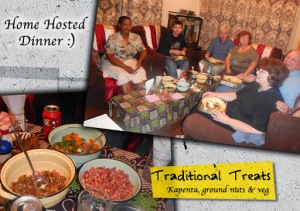
There are a handful of these dinners that occur every Wednesday evening across the two townships, and what I found most interesting is the conversation that was shared between the visitors (who are just absolutely fascinated by the traditional cuisine) and the hosts/hostesses – who gladly share, teach and explain the traditional township customs to the visitors – who on this occasion all happened to be from the USA.
One of the comments which I could not help but giggle at was one that went along the lines of “Goodness! – I can’t believe how well behaved your kids are!”
Some of the families hosting the dinners have up to around 8 children and grandchildren living with them and indeed their behaviour was something to behold when compared to Western-world standards! It was an evening full of questions, answers, laughter and chit-chat, all of the guests seemed to thoroughly enjoy their traditional meals, and some of them were even brave enough to try out a dried Mopani worm or two!

Some may express concern about the safety aspect of having Westerners wonder through these parts of town – to them I simply say “try it and see!”. All of the visitors who I spoke to were taken hugely by surprise at how relaxed, welcoming and happy the vibe is, unlike other parts of the world. Crime is very minimal in Victoria Falls, probably because of the nature of the people, who seem to have a really laid-back, loving, humorous and friendly approach to life.
A Home-Hosted Dinner (or lunch, they also do lunches) is truly a must-do activity if you are keen to really immerse yourself into local customs, cuisine and culture. The vibe of these suburbs in the early evening really is a unique experience – the sights, sounds and smells of fires, evening church bands, urban chatter and of course the beautiful night-views over Livingstone which can be glimpsed at certain high points in the townships really do make for a fulfilling cultural experience. A huge thanks go out to the welcoming host families for opening up their homes in the name of cross-cultural education, experience, fun and food!
May 20, 2014 | Wild Horizons Activites
The concept of the ‘canopy tour’ is a relatively new product in the tourism industry, with the first canopy tour operation opening around 5 years ago in South America. Since then there have been several other operations launched in various parts of the world, including quite a number across South Africa. Wikipedia describes a canopy tour as “an established route through a wooded and often mountainous landscape making primary use of zip-lines and aerial bridges between platforms built in trees”.
In our case, the Vic Falls Canopy Tour is a series of 9 zip-lines, or ‘slides’, which zigzags across the Batoka Gorge in amongst the thick vegetation which grows on the edges of this spectacular natural canyon. The tour is operated from the Wild Horizons Lookout, and takes place within the cove that is formed by the first bend in the river below the Falls – directly beneath the Victoria Falls Hotel. Apart from the 9 cable slides, (or ‘foofy’ slides), the route also comprises a series of boarded walkways and rope bridges, all of which have safety lines to which guests are fastened at all times. The course from start to finish will take around 60 – 90 minutes, depending on the size of the group.
Of-course one of the factors that makes this activity so popular is the breathtaking views of the Batoka Gorge, the Zambezi River and it’s turbulent rapids, and the Victoria Falls Bridge! This is not to mention the awe-inspiring flora and fauna which thrives in the canopy of the Batoka Gorge! It is also a treat for bird watchers, as they are likely to spot Trumpeter Hornbill, Schalow’sTuraco and Peregrine Falcon – and if you are extremely lucky, the rare Taita Falcon.
The slides vary in speed and length, but are all relatively low-speed and are more than suitable for those who don’t consider themselves as adrenalin junkies. The activity is perfect for families with young kids who are looking for that little bit of excitement, but might be too young to take part in the more adrenalin-demanding activities such as the gorge swing or bungeejump. (The same goes for the parents, who on the contrary might be “a little too old” for the bigger adrenalin-demanders!). It is the perfect ‘in-between’ activity, which there is not much choice for when it comes to the plethora of Victoria Falls activities on offer by the many various tour operators. The tour is also suitable for those who don’t like heights as for the most part the slides traverse through trees and thick vegetation.
The canopy tour is growing in popularity when it comes to adventure tourism around the world because of its mild, safe and family-friendly nature. The Vic Falls Canopy Tour is undoubtedly one of the world’s most spectacular courses and is an industry leader when it comes to safety and equipment, as well the training of their staff and guides. The Vic Falls Canopy Tour is a highly recommended activity, which has repeatedly been described as excellent value for money.
The Vic Falls Canopy Tour sells for USD$50 per person, and can be booked by contacting the Wild Horizons reservations team through their website, www.wildhorizons.co.za – or through the main booking office located at 310 Parkway Drive, Victoria Falls.
Apr 17, 2014 | The Flying Fox, The Gorge Swing, The Zip Line, Wild Horizons Activites, Wild Horizons Lookout, Wild Horizons Staff, wildhorizons, Zambezi river
Wild Horizons is a multi-faceted tour company that provides a large array of activities, operates out of multiple locations, has a huge fleet of vehicles, 2 luxury bush camps, employs over 400 people and operates at full tilt, 24/7. So you can imagine, that as a new employee arriving on day one of the job, the introduction is both hugely exciting and somewhat overwhelming. For my first blog post, I thought I would recount what my first couple of weeks in the Wild Horizons marketing department has been like!
One of the things that struck me first and foremost was the friendliness of absolutely everyone. From the gate-guards to the mechanics, to the camp managers and the directors – I was instantly made to feel welcome. I started off with a tour of the main HQ in the industrial sites of Victoria Falls, the size of which blew me away. Four large wings of offices surrounding a big courtyard with lush green buffalo lawn and teeming flower beds around the sides. A large workshop at the back and ample room to park the large fleet of vehicles and luxury transfer busses. My tour of the HQ was accompanied by mass introductions to all the staff in every department – around 100 people in total would be my guess. I admitted to myself that it would be pointless to stress too much about everyone’s names as I would never remember them first time round. No doubt I would pick them up one by one as I deal with each department in due course.

One of my first tasks is to join the marketing team in coming up with a marketing campaign for one of Wild Horizons’ many products – the Vic Falls CanopyTour – the newest of 4 products which Wild Horizons offers from its jump site – “The Lookout”.
The Lookout (#wildhorizonslookout) is a thatched deck structure, which is perched right on the lip of the Batoka Gorge, just downstream of the Vic Falls Bridge on the Zimbabwean side. It has a spectacular view of the bridge and sits overlooking the first ‘bend’ in the zig-zagging gorge which occurs below the Victoria Falls. There is even a tame wild goat called Dixon who hangs out there like all the time!
The other 3 products which operate from The Lookout are the ‘Flying Fox’ – a foofie slide which extends across the width of the entire gorge; the ‘Gorge Swing’, which is a death-defying free-fall off a platform into the gorge attached to a rope, which then ‘swings’ you as you reach the bottom; and the ‘zip-line’ – which is a dual-cabled foofie slide that makes a rather steep downward parabola, but without quite putting you into freefall. Finally, the Vic Falls Canopy Tour is a series of 9 shorter, low-speed cable-slides that crisscross the inside of the first bend of the gorge (below the Victoria Falls Hotel) where the vegetation is thick and very jungle like – with vines and steep drops galore. It offers a very mild adrenaline rush and is the perfect ‘in-between’ activity for those who can’t quite bring themselves to do the more intense adrenalin activities such as the gorge swing, whitewater rafting or the bungee jump.
So off I go with a group of paying clients on the Vic Falls Canopy Tour. We harness up and set off on a path down the side of the gorge, and it’s not far before we get to slide no.1. The guide hooks our safety lines up to a safety rope that runs along the entirety of the course – all the walkways, bridges and even on the actual foofie slides where is a second steel safety cable which we are attached to whilst sliding. My first impression is that the safety is being taken very seriously.
We step up onto a box/platform that overlooks a cliff and the guide hooks our main & safety lines to the respective cables, and upon hearing a whistle through the trees from another guide indicating that he is ready to receive us – we step off the platform and start whizzing down the slide. Now we have been given thick leather gloves for our hands, and we have been instructed to hold our harness line which connects us to the cable with our left hand, and then loosely hold the cable with our other hand, BEHIND the pulley. This allows for us to squeeze the cable with our hand to slow ourselves down when we start reaching the end of the slide. It took a few go’s to get the timing right, but before long I was timing my hand-braking perfectly and was landing gracefully on the box as is required for the guide to dismount you from the pulley and hook you back up to the ground safety line.

This carried on for 8 more slides of varying lengths and speeds, and I looked forward to each slide more than the last – the views were just spectacular and the ambience of being in the Batoka Gorge canopy, with the view of the bridge right in front of you, and the Zambezi roaring beneath you – was just incredible. A really great product indeed, and it even had really nice boarded walkways and rope bridges for the more difficult parts. So far, I’m thinking I love my job!
